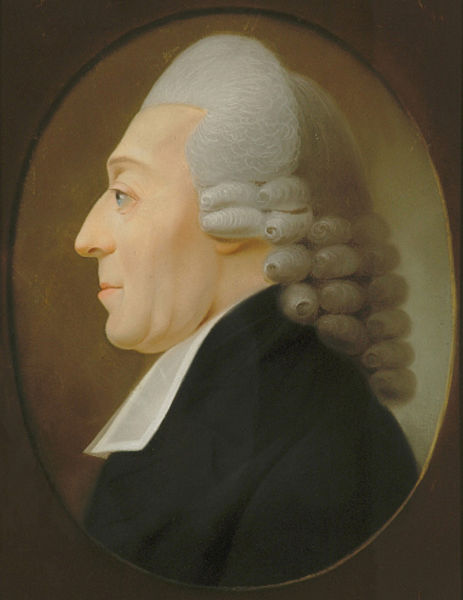|
Parachela (tardigrade)
Parachela is an order of tardigrades in the class Eutardigrada. Members of this order have existed for at least 72 million years, including the present. The oldest known species is '' Beorn leggi''. Superfamilies and families The order includes the following superfamilies and families: * Eohypsiboiidea ** Eohypsibiidae * Hypsibioidea ** Calohypsibiidae ** Hypsibiidae ** Microhypsibiidae ** Ramazzottiidae * Isohypsibioidea ** Hexapodibiidae ** Isohypsibiidae * Macrobiotoidea ** Beornidae ** Macrobiotidae ** Murrayidae ** Necopinatidae ** Richtersiidae Richtersiidae is a family of tardigrade Tardigrades (), known colloquially as water bears or moss piglets, are a phylum of eight-legged segmented micro-animals. They were first described by the German zoologist Johann August Ephraim Goeze ... References External links * * Protostome orders Polyextremophiles {{Tardigrade-stub ... [...More Info...] [...Related Items...] OR: [Wikipedia] [Google] [Baidu] |
Parachela (tardigrade)
Parachela is an order of tardigrades in the class Eutardigrada. Members of this order have existed for at least 72 million years, including the present. The oldest known species is '' Beorn leggi''. Superfamilies and families The order includes the following superfamilies and families: * Eohypsiboiidea ** Eohypsibiidae * Hypsibioidea ** Calohypsibiidae ** Hypsibiidae ** Microhypsibiidae ** Ramazzottiidae * Isohypsibioidea ** Hexapodibiidae ** Isohypsibiidae * Macrobiotoidea ** Beornidae ** Macrobiotidae ** Murrayidae ** Necopinatidae ** Richtersiidae Richtersiidae is a family of tardigrade Tardigrades (), known colloquially as water bears or moss piglets, are a phylum of eight-legged segmented micro-animals. They were first described by the German zoologist Johann August Ephraim Goeze ... References External links * * Protostome orders Polyextremophiles {{Tardigrade-stub ... [...More Info...] [...Related Items...] OR: [Wikipedia] [Google] [Baidu] |
Hypsibius Dujardini
''Hypsibius dujardini sensu lato'' is a species complex of tardigrade in the class Eutardigrada. A member of this complex, ''Hypsibius exemplaris'', is widely used for various research projects pertaining to evolutionary biology and astrobiology. ''H. exemplaris'' was differentiated from ''H. dujardini sensu stricto ''Sensu'' is a Latin word meaning "in the sense of". It is used in a number of fields including biology, geology, linguistics, semiotics, and law. Commonly it refers to how strictly or loosely an expression is used in describing any particular co ...'' in 2018. Earlier studies refer to this lab species from northwest England as ''H. dujardini''. ''H. dujardini s.s.'' is found in France, and has differences in 18S rRNA sequence and morphological details. Habitat The species, ''Hypsibius dujardini'', is a tardigrade that prefers freshwater lakes, rivers, and streams. Because they are considered cosmopolitan, their geographical range is immense. They can be found i ... [...More Info...] [...Related Items...] OR: [Wikipedia] [Google] [Baidu] |
Richtersiidae
Richtersiidae is a family of tardigrade Tardigrades (), known colloquially as water bears or moss piglets, are a phylum of eight-legged segmented micro-animals. They were first described by the German zoologist Johann August Ephraim Goeze in 1773, who called them Kleiner Wasserbär ...s belonging to the order Parachela. Genera: * '' Adorybiotus'' Maucci & Ramazzotti, 1981 * '' Diaforobiotus'' Guidetti, Rebecchi, Bertolani, Jönsson, Kristensen & Cesari, 2016 * '' Richtersius'' Pilato & Binda, 1989 References {{Taxonbar, from=Q4125805 Parachaela Tardigrade families ... [...More Info...] [...Related Items...] OR: [Wikipedia] [Google] [Baidu] |
Necopinatidae
''Necopinatidae'' is a family of water bears or moss piglets, tardigrades in the class Eutardigrada Eutardigrada are a class of tardigrades (Tardigrada) without lateral appendices. Primarily freshwater bound, some species have secondarily gained the ability to live in marine environments (''Halobiotus''). By cryptobiosis many species are able t .... It contains the following species in two genera * '' Apodibius'' ** '' Apodibius confusus'' Dastych, 1983 ** '' Apodibius nuntius'' Binda, 1986 ** '' Apodibius richardi'' Vargha, 1995 ** '' Apodibius serventyi'' Morgan & Nicholls 1986 * '' Necopinatum'' ** '' Necopinatum mirabile'' Pilato, 1971 References External links Parachaela Tardigrade families Polyextremophiles {{tardigrade-stub ... [...More Info...] [...Related Items...] OR: [Wikipedia] [Google] [Baidu] |
Macrobiotidae
Macrobiotidae is a family of tardigrade. , it consists of the following genera: * '' Biserovus'' * '' Calcarobiotus'' ** ''C.'' (''Calcarobiotus'') ** ''C.'' (''Discrepunguis'') * '' Famelobiotus'' * '' Insuetifurca'' * '' Macrobiotus'' * '' Mesobiotus'' * '' Minibiotus'' * '' Minilentus'' * '' Paramacrobiotus'' * '' Pseudodiphascon'' (genus dubium) * '' Pseudohexapodibius'' * '' Schusterius'' * '' Sisubiotus'' * '' Tenuibiotus'' * '' Xerobiotus'' The genera '' Adorybiotus'' and '' Richtersius'' were transferred from Macrobiotidae to a new family, Richtersiidae Richtersiidae is a family of tardigrade Tardigrades (), known colloquially as water bears or moss piglets, are a phylum of eight-legged segmented micro-animals. They were first described by the German zoologist Johann August Ephraim Goeze ..., in 2016. References Tardigrade families Parachaela {{Tardigrade-stub ... [...More Info...] [...Related Items...] OR: [Wikipedia] [Google] [Baidu] |
Tardigrade
Tardigrades (), known colloquially as water bears or moss piglets, are a phylum of eight-legged segmented micro-animals. They were first described by the German zoologist Johann August Ephraim Goeze in 1773, who called them Kleiner Wasserbär ("little water bear"). In 1777, the Italian biologist Lazzaro Spallanzani named them Tardigrada (), which means "slow steppers". They have been found in diverse regions of Earth's biospheremountaintops, the deep sea, tropical rainforests, and the Antarctic. Tardigrades are among the most resilient animals known, with individual species able to survive extreme conditions – such as exposure to extreme temperatures, extreme pressures (both high and low), air deprivation, radiation, dehydration, and starvation – that would quickly kill most other known forms of life. Tardigrades have survived exposure to outer space. There are about 1,300 known species in the phylum Tardigrada, a part of the superphylum Ecdysozoa consisting of animals th ... [...More Info...] [...Related Items...] OR: [Wikipedia] [Google] [Baidu] |
